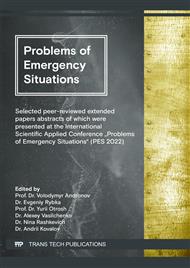p.1
p.9
p.17
p.27
p.41
Issues of Resistance to Progressive Failure of Load-Bearing Systems in Lira-Sapr Software
Abstract:
The article is devoted to the description of analytical and structural methods used in the design to avoid progressive collapse of buildings and structures in the case of extreme influences. Three directions are described to avoid the process of development of local to global destruction. The concept realized in the LIRA-SAPR software, which is aimed at automating analysis for progressive collapse in quasi-static and dynamic formulations, including linear and nonlinear analysis taking into account the dynamic factor, is also substantiated. The purpose of the analysis is to design structures for various purposes, which in addition to accident-free performance of functions during the specified period of operation, in case of an accident due to natural and man-made phenomena (defects in production technology, explosions, impacts), as well as other causes not provided for by the conditions of normal operation, would cause minimal damage to people and the environment.
Info:
Periodical:
Pages:
17-25
Citation:
Online since:
July 2022
Authors:
Price:
Сopyright:
© 2022 Trans Tech Publications Ltd. All Rights Reserved
Share:
Citation:



